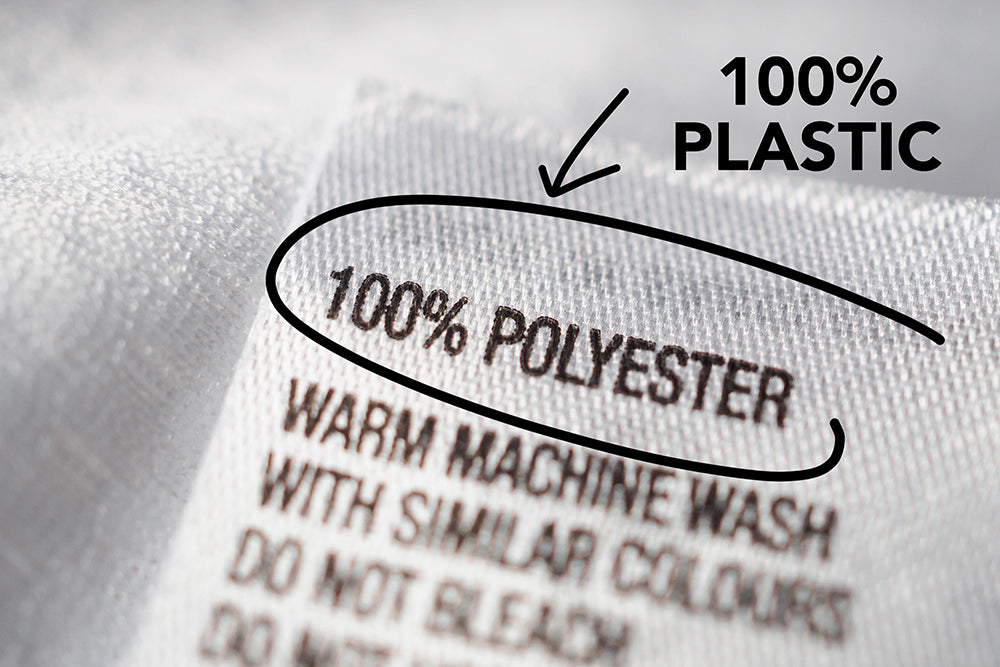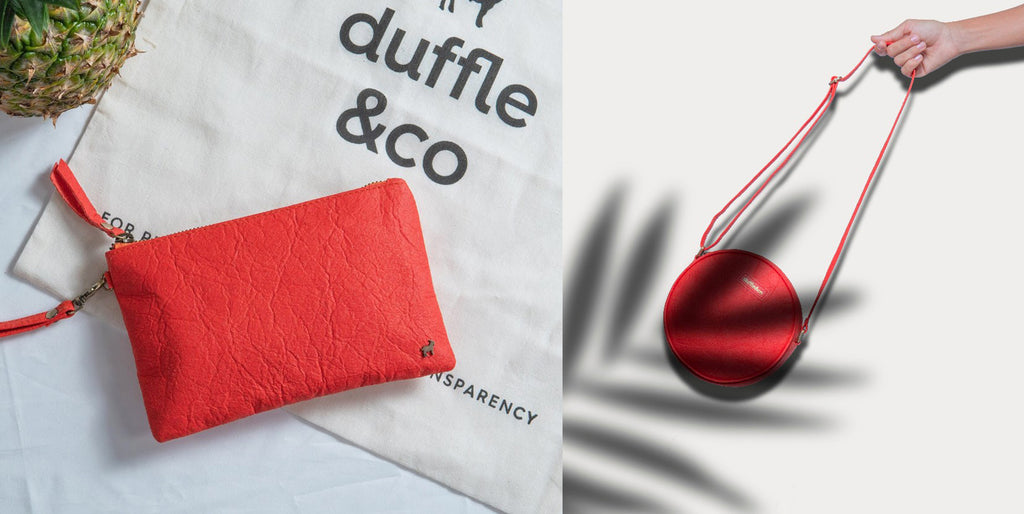Your latest outfit is a plastic bag in disguise
Plastic-free July is a great time to talk about how to reduce plastic, but at Ethique, we talk about it on the daily.
Let’s talk about swapping plastic bags for reusables, plastic cutlery for bamboo and disposable coffee cups for reusable cups. Yay!
That’s all good, but to solve our plastic crisis, we must go much deeper than that – or more surface, as the case may be. Let’s talk about plastic in our clothes.

Why plastic clothes are a bad idea
Remember: plastic doesn’t break down. When exposed to friction or just through daily wear and tear, plastic breaks up into tiny strands of plastic called micro-fibres. Less than 1mm long, they’re too small for us to see, but they’re out there. One hundred million trillion of them to be exact, and they’ve been found in every environment on earth, even in our deepest, darkest oceans.
The same goes for plastic fabrics, like polyester and nylon. In fact, synthetic material is where most of the microfibres in our environment come from. Every time you wash your polyester top or your polar fleece, you’re draining plastic micro-fibres into our waterways.
We don’t yet know what these plastic pieces are doing to our environment, wildlife or even to us, but it’s fair to say it probably isn’t good. We know they’re definitely affecting microscopic creatures. Plankton, microscopic sea creatures who provide much of Earth’s oxygen, consume the particles, as do smaller fish and other marine organisms - adding the plastic to our food chain.
Some clever clogs have invented a multiple filtration system that bolts onto your washing machine to catch the microfibres. But now I’m sitting here wondering, ‘What exactly do we do with the collected fibres?’ A filter is simply another thing that people would need to buy, using further additional resources and it probably won’t solve the problem.
What about clothes made with ocean plastic?
While I’m all for reuse and incentivising people to clean the ocean, personally I don’t think we should be doing this. The reality is that by removing plastics from our oceans, recycling it into clothing and repeatedly washing it, all you’re doing is breaking the material into hundreds of thousands of tiny pieces, which we have no way of stopping entering our oceans. We can at least fish those original bottles out - once they're microfibres, we can’t.
We need another way of incentivising people to remove ocean plastics. Looking at putting these recycled plastics into cars or furniture, which don’t get washed as frequently, would be a great start.
Plastic performs a wonderful magic trick in seawater - it adsorbs chemical compounds such as dioxins and perfluorinated chemicals (which we also pollute the ocean with.) That means when sea life eats the fibres, it’s not just plastic they’re ingesting, but these carcinogenic, mutagenic and teratogenic chemicals too (i.e. ones that mutate DNA, and cause birth defects and cancer). The compounds also bioaccumulate (when they move up the food chain and get more concentrated), and have been found in water supplies and in high concentrations in animals such as sharks and polar bears.

[[ Photo credit : Duffle and Co who have created hand bags from Pinatex (leather made from pineapple leaves]]
Non-plastic alternatives
There are plenty of other options for fabric fibres: wool, bamboo, hemp and even new discoveries like Pinatex (leather made from pineapple leaves.) Mushrooms are proving an interesting source of fibres - even some car seats are made of mushroom leather.
For vegans, this poses an ethical quandary. Wool is a fantastic fibre, but the animal welfare for some farms and practices is not what it should be.
And a recent study has noted that wool is not biodegradable in water. A finding which surprised many. While the effects of sea life consuming wool is probably less detrimental than plastic, sheep produce methane, a much more powerful greenhouse gas than carbon dioxide. So I don’t think wool is the best choice either, either ethically or environmentally.
So how to avoid adding to our ocean’s plastic load?
So, no plastic fabric – got it. While cotton is incredibly land, pesticide and water-thirsty, bamboo, hemp and hessian all make wonderful low-impact fabrics.
BUT. If we switched all our textile production to bamboo, cotton, hessian and hemp, and continued the same level of production, we would need an incredible amount of land. Water too, because plastic production is actually quite water efficient.
So the best thing we can do is stop buying stuff. Nobody needs a $3 t-shirt, especially not the earth. 10% of total carbon emissions come from the fashion industry. The industry uses more energy than all transport and shipping combined. It is the second most polluting industry on earth.
I am guilty of buying too many clothes and not wearing them as often as I should. I made a conscious decision to stop months ago, and haven’t missed it. If I need something, I will get a quality piece, eg. a natural fibre jacket, made in NZ by people paid a fair wage.
And yes, this would impact on people who depend on the fashion industry for their livelihoods. But not half as much as a dead planet would. (There are, of course, plenty of ways to mitigate this.)
And finally, please don’t throw away your existing synthetic clothing! Wash it only when it needs to be washed (sniff tests a-go), wear it out, but then - and this is key - don’t replace it.



